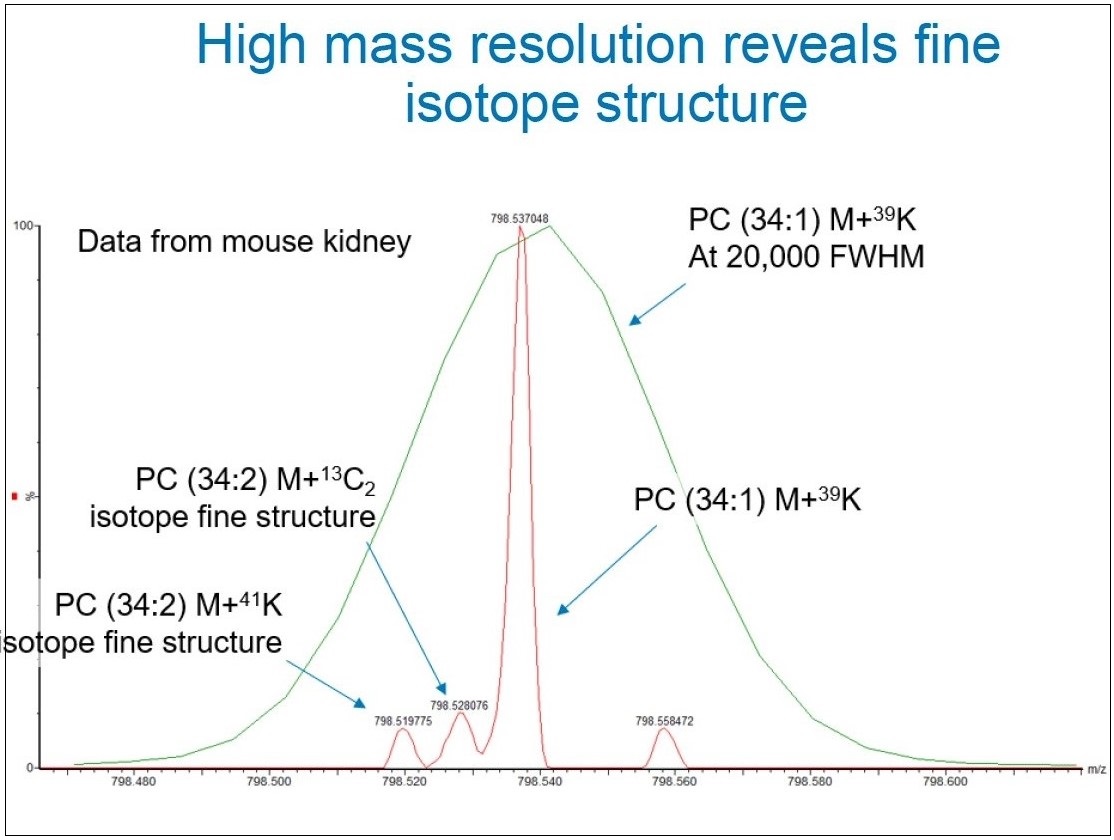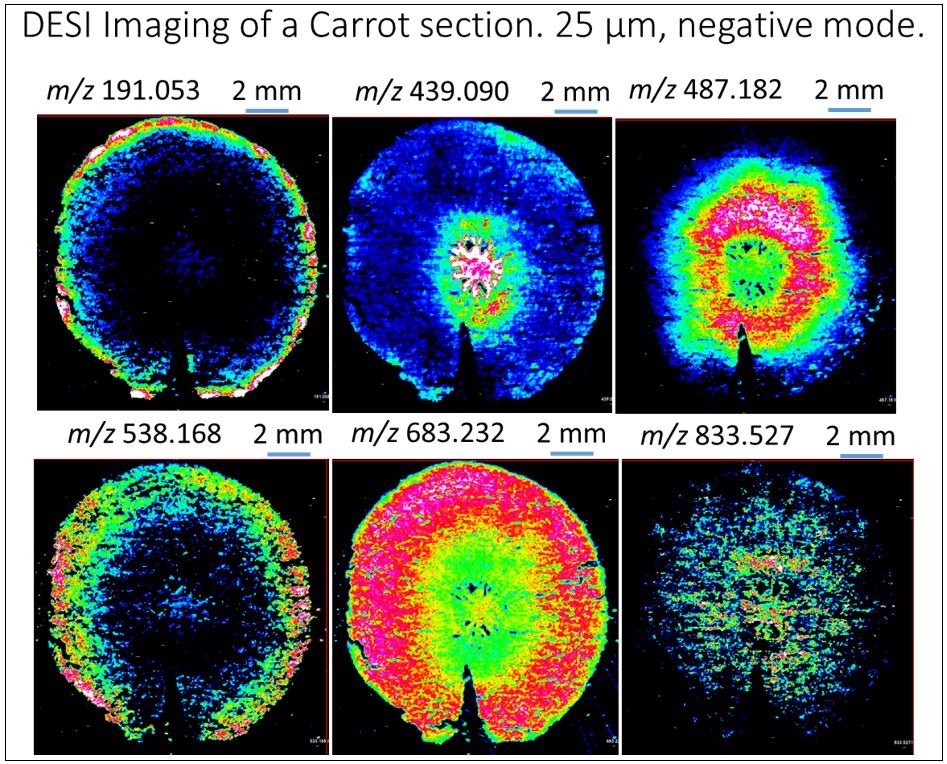 The Centre for Microscopy and Microanalysis is pleased to announce the installation of the Waters MRT. This is the first of these instruments to be installed in Australia and the 2nd installed globally. The instrument was purchased with a Microscopy Australia grant funded by the Commonwealth, the Queensland Government and the University of Queensland (NCRIS/RICF) and will be available to researchers via CMM, as per other Microscopy Australia funded equipment at UQ-CMM. The Waters MRT is fundamentally a mass spectrometry imaging (MSI) orientated instrument, providing excellent spatially resolved mass spectrometry for lipids and metabolites using desorption electrospray (DESI) and lipids, metabolites and peptides using matrix assisted laser desorption ionisation (MALDI). The mass resolution is typically 200,000, and mass accuracy typically sub ppm, which allows for excellent confirmation of the molecular formula for species observed during MSI analysis.
The Centre for Microscopy and Microanalysis is pleased to announce the installation of the Waters MRT. This is the first of these instruments to be installed in Australia and the 2nd installed globally. The instrument was purchased with a Microscopy Australia grant funded by the Commonwealth, the Queensland Government and the University of Queensland (NCRIS/RICF) and will be available to researchers via CMM, as per other Microscopy Australia funded equipment at UQ-CMM. The Waters MRT is fundamentally a mass spectrometry imaging (MSI) orientated instrument, providing excellent spatially resolved mass spectrometry for lipids and metabolites using desorption electrospray (DESI) and lipids, metabolites and peptides using matrix assisted laser desorption ionisation (MALDI). The mass resolution is typically 200,000, and mass accuracy typically sub ppm, which allows for excellent confirmation of the molecular formula for species observed during MSI analysis.
The Waters MRT is essentially a quadrupole time-of-flight (QqTOF), with the major difference that our new TOF analyser is a grid-less multi-reflecting TOF, increasing the path length to approximately 50m. The use of periodic lenses keeps the ion beam from diverging, and ultimately allows the instrument to achieve close to 90% ion transmission and deliver 200,000 mass resolution and typically 500 ppb mass accuracy.
Video showing the operation of the MRT TOF analyser.
The MRT instrument includes the recently released DESI XS source and a new generation of MALDI from Waters. Having an instrument capable of both modes of ionisation with the aforementioned mass resolution and mass accuracy capabilities offers unprecedented levels of analytical confidence for the MSI analysis of lipids, metabolites and peptides. Typically, the mas accuracy is sufficient to establish the molecular formula of the analyte detected.
The figure below displays the effect of applying 200,000 vs 20,000 mass resolution, and clearly shows that at 20,000 the peak will contain contributions from more than one analyte. At 200,000 mass resolution our resulting MSI data can be more confidently assigned to an individual specie.
Below is some example data acquired in negative mode at 25 μm pixel size using DESI from a transverse section of a carrot, which was sectioned to 10 μm.
The Waters MRT is a very useful instrument for undertaking MSI analysis of lipids and metabolites, particularly when using DESI, which does not require the use of a matrix. DESI imaged samples can be subsequently used for follow-up MALDI experiments. The figure below shows some examples of a positive mode DESI analysis of a Rat brain at 50 μm pixel size. Annotation was undertaken on the basis of observed precursor mass using Lipidmaps. Structural confirmation may be undertaken with accompanying LC-MS, or perhaps using MSMS or ion mobility on a complementary instrument.
The Waters MRT is now available for use at the Centre for Microscopy and Microanalysis, in the same open accessible manner as other existing infrastructure within CMM. Once trained, users can book and use the instrument at the Hawken Lab (Bld 50).
Location: Hawken Building #50 (Room L106)
Contact: Brett Hamilton: b.hamilton@uq.edu.au






